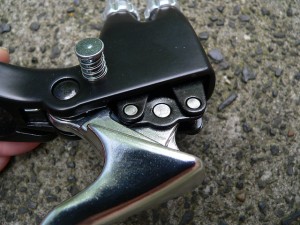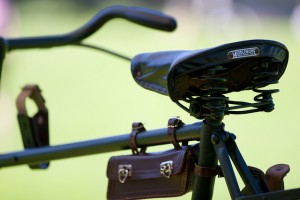 It’s important to get the best size bike but there is a little room for adjustment once you have it.
It’s important to get the best size bike but there is a little room for adjustment once you have it.
Moving cycle saddle
You can move the saddle up and down, of course, but it can also be moved back and forth on the saddle rails to adjust the bike reach – the distance you have to stretch for the handlebars. All this requires is an Allen key. Make sure you don’t exceed the limits which are usually clearly marked on the rails.
Changing your bikes stem
Different length stems can also be used to further extend or reduce the reach. These are particularly useful if you have very long or short arms. This can be a bit of an investment, with stems costing £15 and upwards but can reap great benefits in terms of comfort.
Raising or lowering your bikes handlebars
Likewise handlebar height can be adjusted using spacers which fit above the headset. Likewise, it is possible to buy a new stem which has a different angle which will bring the handlebars closer or further away.
Adjusting the reach on your bikes brakes
Some modern brakes even allow you to adjust how far they are away from your fingers. So its easy to make minor adjustments to achieve the perfect fit.
Adjusting bicycle saddle height
 When you get your new bike, the single most important thing to get right – for a comfortable ride and to ensure your ride as efficiently as possible – is saddle height.
When you get your new bike, the single most important thing to get right – for a comfortable ride and to ensure your ride as efficiently as possible – is saddle height.
Too high and its uncomfortable and bad for your joints, too low and its bad for your back and means you’ll be putting in loads of extra effort.
How to get the best bike saddle height
To tell if your bicycle saddle is at the right height:
- Sit on your bike balancing against a friend or the wall.
- Sit firmly on the saddle.
- Extend one leg to the bottom of a pedal turn.
- If your saddle is as the correct height your leg should be nearly, but not quite, straight when the pedal is at the lowest point in its rotation. There should be a little bend in the knee.
Some people like to be able to put both feet on the ground when they are sat on their bike seat and, while this is good for confidence, you’ll be putting in a lot of extra effort.You soon get used to having to get off the saddle to stop, and you’ll soon notice how much easier it is getting up hills!
Bike reach
 The second most important measurement, after standover height is reach – the distance to the handlebars when you are in the saddle. In most cases this should be fine, bikes are designed for the average person.
The second most important measurement, after standover height is reach – the distance to the handlebars when you are in the saddle. In most cases this should be fine, bikes are designed for the average person.
However, if you are right on the divide between two sizes of bike, getting the best reach may be an issue, depending on the length of your arms.
Measuring bike reach
In this case you should measure your reach, or ‘Ape Index’. This is the length of your arm span, minus your height. Measure your arm span by standing up straight and lifting your hands our horizontally either side of you. The distance from fingertip to fingertip is the span. Now subtract your height from this figure.
If the result is positive – i.e. your arm span is greater than your height – go for the larger sized bike. If it is a negative value, say -3cm, then you should choose the smaller bike.
ARM SPAN – HEIGHT = APE